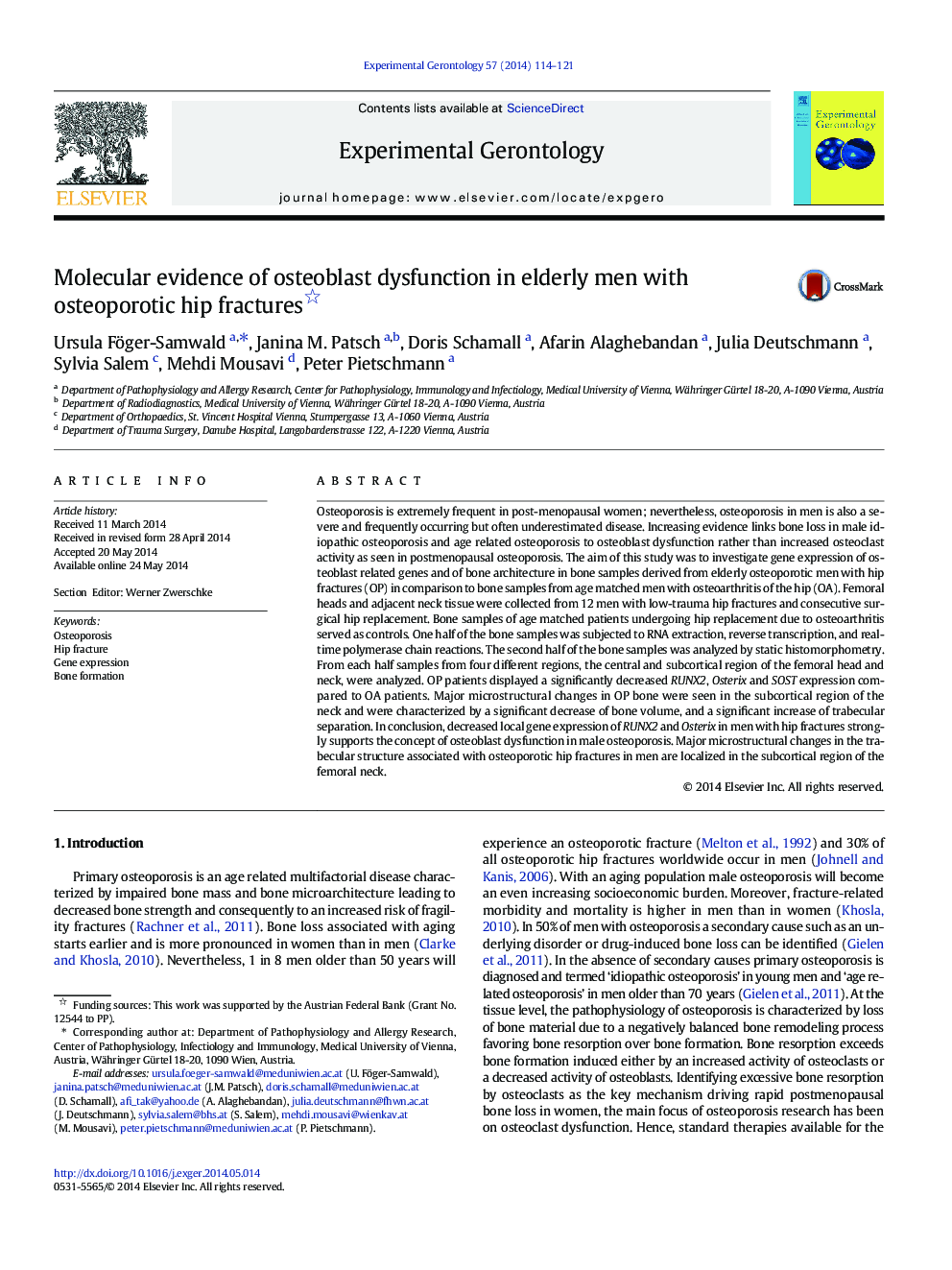| Article ID | Journal | Published Year | Pages | File Type |
|---|---|---|---|---|
| 8264113 | Experimental Gerontology | 2014 | 8 Pages |
Abstract
Osteoporosis is extremely frequent in post-menopausal women; nevertheless, osteoporosis in men is also a severe and frequently occurring but often underestimated disease. Increasing evidence links bone loss in male idiopathic osteoporosis and age related osteoporosis to osteoblast dysfunction rather than increased osteoclast activity as seen in postmenopausal osteoporosis. The aim of this study was to investigate gene expression of osteoblast related genes and of bone architecture in bone samples derived from elderly osteoporotic men with hip fractures (OP) in comparison to bone samples from age matched men with osteoarthritis of the hip (OA). Femoral heads and adjacent neck tissue were collected from 12 men with low-trauma hip fractures and consecutive surgical hip replacement. Bone samples of age matched patients undergoing hip replacement due to osteoarthritis served as controls. One half of the bone samples was subjected to RNA extraction, reverse transcription, and real-time polymerase chain reactions. The second half of the bone samples was analyzed by static histomorphometry. From each half samples from four different regions, the central and subcortical region of the femoral head and neck, were analyzed. OP patients displayed a significantly decreased RUNX2, Osterix and SOST expression compared to OA patients. Major microstructural changes in OP bone were seen in the subcortical region of the neck and were characterized by a significant decrease of bone volume, and a significant increase of trabecular separation. In conclusion, decreased local gene expression of RUNX2 and Osterix in men with hip fractures strongly supports the concept of osteoblast dysfunction in male osteoporosis. Major microstructural changes in the trabecular structure associated with osteoporotic hip fractures in men are localized in the subcortical region of the femoral neck.
Related Topics
Life Sciences
Biochemistry, Genetics and Molecular Biology
Ageing
Authors
Ursula Föger-Samwald, Janina M. Patsch, Doris Schamall, Afarin Alaghebandan, Julia Deutschmann, Sylvia Salem, Mehdi Mousavi, Peter Pietschmann,
